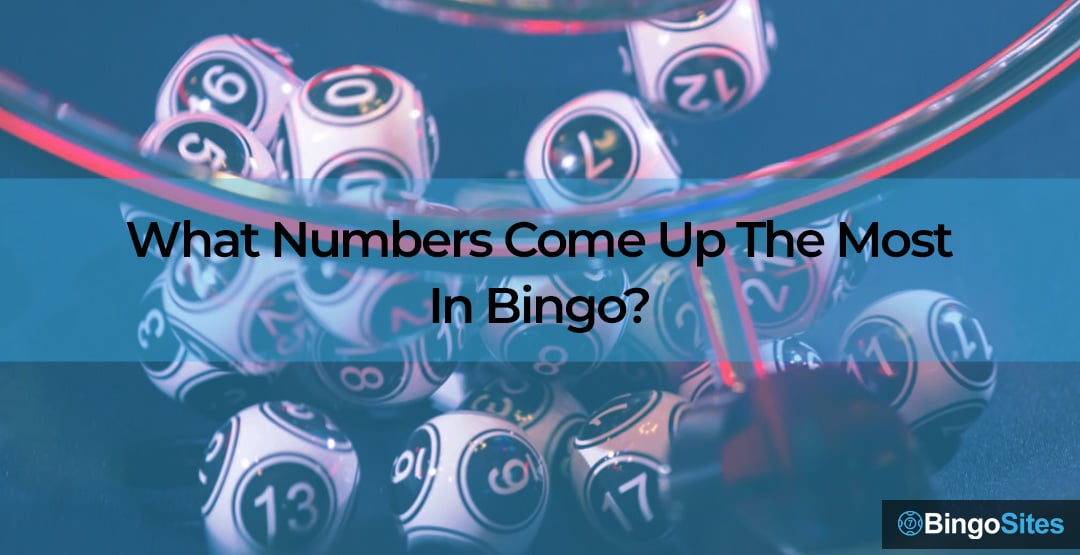What Numbers Come Up The Most In Bingo?
Last Updated on , written by Amelia Cassiday
The most important thing to remember about bingo is that it is entirely random; however, in some cases, particular numbers get drawn more frequently than others, though this is not exactly set in stone.
In online bingo, every legitimate bingo site (these have a licence from a reputable online gambling commission) has a random number generator (RNG), which helps to ensure fairness across the board.
Some people will find that they have more luck with a particular set of numbers than others, whether they are low, high, odds or evens and this also depends on which format of the game they play.
We are all, of course, familiar with some of the bingo calls, and some people may have emotional connections to these, such as ‘two little ducks’, which is ’22’ or ‘knock on the door – number ‘4’.
These calls are more for traditional bingo, played in bingo halls, and it is very rare to see a site that incorporates this into its gameplay.
Also, there isn’t a dedicated, impartial study from a reputable source that provides information about the numbers that are generated the most in bingo. Because again, it purely comes down to luck; however, some theories provided by notable mathematicians go into detail about methods that players can apply.
These theories do talk about number frequency and the reasoning behind this, though, again, this is purely academic, and no absolute conclusion can be drawn from these.
Below, we have gone into more detail about the theories, giving you a balanced amount of information about number frequency.
The Tippett Theory
Leonard Henry Caleb Tippett was a prominent and revered statistician from England. He invested a lot of time into analyzing the game of bingo to try and determine the most effective ways to win – none of these being a guarantee.
According to Tippett, based on the research that he conducted, he surmised that, eventually, that bingo is entirely random. However, this helped him to define what has become known as the best bingo theory that can be applied to a potentially winning strategy.
Initially, the theory was based completely on numbers and randomness; by chance, he realized that it could be applied in some way to the game of bingo.
His thought process evolved to the point that he realized this theory, which was based on randomness is that the average of all the balls in the game, before they had been drawn were the ‘perfect average’.
It meant that the longer a game progressed, each number drawn would become much closer to the ‘perfect average’. In a 90-ball game of bingo, this number would be ’45’. As a result, the theory is that the chance of numbers being drawn that are close to ’45’ would increase.
Applying this argument, it could mean that the numbers that come up the most in bingo games are those that are the closest to the median number – so between 40 and 50.
The Granville Theory
Famously known for his work surrounding the financial markets, Joseph Granville was a leading analyst and writer who spent most of his life beating the stock market.
The theories that he formulated helped him to do this, and one of these was the OBV (On Balance Volume).
One of the theories he came up with has been directly related to bingo and aiding players in forming a winning strategy. Arguably the most popular theory, this relates to the fact that every number has the same probability of being drawn, again, due to the game’s random nature.
This knowledge prompts players to pick cards with a wide range of numbers and an even amount. For example, an equal volume of high and low numbers, odd and even, in addition to as many numbers that end in either a zero or nine.
If you are playing 75-ball bingo and the first number drawn is a ’10’, it means that it increases the probability of another number being drawn that ends in a different number. The same explanation can be applied to odds and even numbers.
At the same time, this theory does not offer any guarantees of a particular number being called out, and, as a result, it is hard to distinguish which numbers come up the most in the game.
Which Theory Provides The Most Sense?
For those bingo players that are looking for more clarity and ultimately want to know which numbers perhaps come up the most in the game, Tippet’s theory may provide them with more direction.
His theory would therefore suggest (in a 90-ball game), that numbers that are the closest to ’45’ – the median number, would be more likely to be drawn more frequently the longer a game progresses.
However, the most important thing to note is that there is no way of telling what numbers come up the most in bingo, and you should simply just enjoy the game and not play to win.


 Amelia Cassiday is an online bingo writer and player for the past 5 years. Her expertise and knowledge of the online bingo industry are utilised when covering the latest news and trends. Amelia particularly enjoys reviewing new bingo sites as well as writing detailed game guides. When offline, she can be found maintaining her garden and reading a good book at her home in Newcastle, UK.
Amelia Cassiday is an online bingo writer and player for the past 5 years. Her expertise and knowledge of the online bingo industry are utilised when covering the latest news and trends. Amelia particularly enjoys reviewing new bingo sites as well as writing detailed game guides. When offline, she can be found maintaining her garden and reading a good book at her home in Newcastle, UK.


